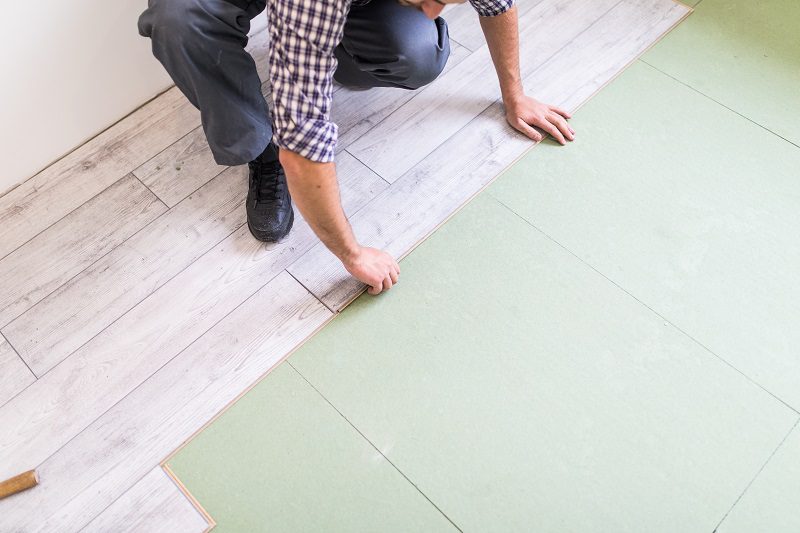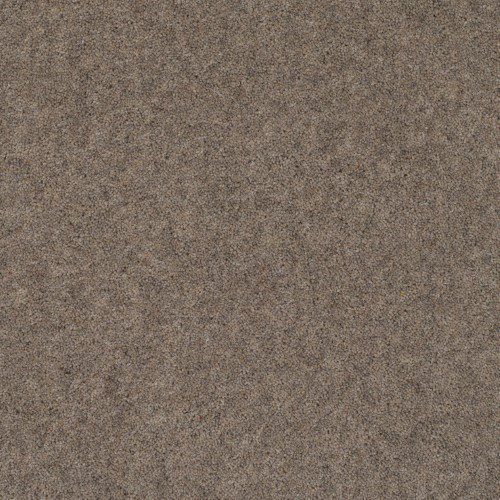If you’re considering installing laminate flooring, one important factor to keep in mind is the thickness of the underlay. We will explore why laminate underlay thickness is crucial and how it can impact your flooring.
From the benefits of using thick underlay to the factors that affect the thickness needed, we will cover everything you need to know to make an informed decision.
Learn about recommended thickness, the potential consequences of using underlay that is too thin or too thick, and how to choose the right thickness for your specific needs.
Why Is Laminate Underlay Thickness Important?
The thickness of laminate underlay is vital due to its impact on the longevity, comfort, and performance of laminate flooring. Optimal underlay thickness ensures proper insulation, sound reduction, and overall stability of the flooring.
Choosing the right thickness of laminate underlay (often measured in millimetres) is crucial for several reasons. It acts as a moisture barrier, preventing any potential damage from dampness. This feature, known as a damp-proof membrane (DPM), safeguards the flooring from moisture-related issues, thereby extending its lifespan.
The underlay’s thickness contributes significantly to thermal insulation, offering a cosy feel underfoot and reducing heat loss. Along with its protective and insulating properties, a thicker underlay provides an extra layer of cushioning, enhancing the overall comfort of your space and absorbing impact.
A substantial underlay thickness aids in minimising noise transmission, creating a quieter environment by absorbing and dampening sound vibrations. This feature is particularly advantageous in multi-level buildings or areas with high foot traffic, where noise reduction can significantly improve living quality.
The Benefits of Using Thick Laminate Underlay
Thick laminate underlay offers numerous advantages, including superior sound reduction, enhanced thermal insulation, increased comfort underfoot, and improved durability for laminate flooring installations.
One of the primary benefits of utilising a thick laminate underlay is its exceptional soundproofing qualities. The dense material effectively absorbs footsteps, reducing noise transmission between floors and creating a peaceful environment.
The thermal insulation properties of the underlay help regulate room temperature, resulting in energy savings and increased cosiness. The extra padding provides a cushioned feel underfoot, making walking more comfortable and reducing strain on joints.
Another notable advantage is the moisture protection offered by the underlay, preventing potential damage to the laminate flooring from below. Opting for a thick laminate underlay is a smart choice for achieving a quieter, more insulated, and comfortable living space.
What Factors Affect Laminate Underlay Thickness?
How thick should the underlay be for laminate flooring? Several factors influence the ideal laminate floor underlay thickness, such as the subfloor type, the specific laminate flooring material, and the intended usage of the room where the installation will take place.
a. Subfloor Type
The type of subfloor, whether it is concrete or wooden, significantly affects the required thickness of laminate underlay. Concrete subfloors may need thicker underlay for better insulation and moisture protection.
When dealing with concrete subfloors, it is crucial to choose a laminate underlay that offers not only thermal insulation but also moisture resistance.
b. Cork Underlay
Cork underlay is a popular choice for concrete subfloors due to its natural moisture-resistant properties and thermal insulation benefits. This type of underlay helps prevent moisture from seeping through to the laminate flooring, protecting it from potential damage. For spaces where underfloor heating is installed, it is essential to select an underlay that is compatible with this heating system to ensure optimal performance.
c. Laminate Flooring Type
The type of laminate flooring being installed also influences the ideal underlay thickness. Luxury laminate flooring may require thicker underlay for better support and longevity.
On the other hand, basic or standard laminate options might function well with a thinner underlay. When considering underlay thickness, it’s crucial to look at the specific characteristics of the laminate material, such as its sound reduction properties and the material it’s made of.
For instance, when dealing with a laminate material that is more prone to transmitting sound, a thicker fibreboard underlay can significantly improve the sound reduction performance and overall acoustics of the flooring.
d. Room Usage
The intended use of the room where laminate flooring is installed plays a role in determining the appropriate underlay thickness. Rooms with underfloor heating may require specific thermal underlay for optimal results.
When considering laminate underlay thickness, it’s crucial to factor in the room’s insulation needs to ensure efficient heat distribution in spaces with underfloor heating systems. Noise reduction is another key consideration, especially in bedrooms or living areas where a peaceful ambience is desired. Selecting a thicker underlay can significantly reduce noise transmission, enhancing overall comfort.
The ease of installation is impacted by the underlay’s thickness. Thinner options are lighter and easier to handle, making them suitable for DIY projects. In contrast, thicker underlays offer better cushioning and support, ideal for high-traffic areas like hallways or kitchens.
Laminate Underlay Thickness Recommendation
What thickness underlay is best for laminate flooring? The recommended laminate underlay thickness varies based on whether it is for residential or commercial use. It is essential to choose the right thickness to ensure optimal performance and longevity of the laminate flooring.
a. Residential Use
In domestic settings, the ideal laminate underlay thickness should provide sufficient insulation, sound reduction, and comfort for everyday living. Proper installation techniques are crucial to ensure the underlay performs effectively.
When selecting the appropriate laminate underlay thickness, it is essential to consider the specific needs of the space. For insulation, a thicker underlay can help maintain a comfortable indoor temperature and reduce energy costs. Sound reduction requirements may vary depending on the location of the room, with some areas requiring more noise insulation than others.
The moisture resistance of the underlay is crucial to prevent damage to the laminate flooring. Opting for a moisture-resistant underlay can prolong the lifespan of the flooring and prevent mould or mildew growth. Installation best practices include ensuring a smooth, flat surface before laying the underlay and using the correct adhesive or tape to secure it in place.
b. Commercial Use
Commercial spaces require durable and thick laminate underlay to withstand high foot traffic and provide long-lasting support for heavy loads. Selecting the right underlay thickness is essential for commercial flooring longevity.
The thick laminate underlay not only enhances the longevity of the commercial flooring but also provides sound insulation, reduces heat loss, and ensures a comfortable underfoot feel for those working or walking in the space. The load-bearing capacity of the underlay is crucial in commercial settings to prevent damage to the subfloor and maintain the integrity of the flooring installation. The maintenance requirements of thick underlays are relatively low, offering a hassle-free solution for busy commercial environments.
What Happens if the Laminate Underlay Is Too Thin?
If the laminate underlay is too thin, it can lead to issues such as increased noise transmission, reduced thermal insulation, and potential damage to the laminate flooring due to inadequate support.
a. Noise and Sound Reduction
Insufficient laminate underlay thickness can result in poor noise reduction capabilities, leading to increased sound transmission between floors. Choosing thicker underlay improves soundproofing qualities.
Thicker underlay provides enhanced noise reduction benefits, creating a more peaceful indoor environment by dampening impact noises and reducing airborne sound transmission. This is especially crucial in spaces with high foot traffic or where quietness is valued, such as bedrooms or living rooms.
Thicker underlay can also have a positive impact on the overall comfort of the room. It can help maintain a consistent temperature by acting as an effective thermal insulation layer, making it ideal for rooms with underfloor heating systems.
b. Moisture Protection
Thin laminate underlay may fail to provide adequate moisture protection, increasing the risk of damage to both the flooring and subfloor. Opting for thicker underlay enhances moisture resistance.
Moisture is one of the primary enemies of laminate flooring, causing warping, mould growth, and even structural issues over time.
When the laminate underlay is too thin, it becomes susceptible to moisture seepage, compromising the integrity of the entire flooring system. A thicker underlay acts as a barrier against moisture, preventing it from reaching the laminate surface or the subfloor beneath. This added protection not only safeguards the flooring against damage but also extends its lifespan, providing a more durable and visually appealing finish.
c. Insulation
Thin underlay compromises thermal insulation properties, resulting in heat loss and reduced energy efficiency. Thicker laminate underlay enhances insulation, creating a more comfortable indoor environment.
Thermal underlay thickness plays a crucial role in providing an additional barrier to heat transfer, thereby improving the overall energy efficiency of a space. By opting for a thicker laminate underlay, you are not only enhancing the thermal insulation of your floor but also contributing to a more sustainable living environment. The added thickness helps reduce the amount of heat that escapes through the floor, especially when combined with underfloor heating systems.
What Happens if the Laminate Underlay Is Too Thick?
Is thicker underlay better for laminate flooring? An excessively thick laminate underlay can lead to challenges such as uneven flooring, difficulties in installation, and increased overall cost of the flooring project.
a. Uneven Flooring
Excessive underlay thickness can result in uneven flooring surfaces, causing visible bumps and inconsistencies that affect the aesthetics and functionality of the laminate flooring. Proper installation methods are essential to address this issue.
When the underlay is excessively thick, it can lead to challenges such as a lack of stability for the laminate flooring, making it prone to shifting and creating gaps.
Exact and precise techniques for installation become crucial in ensuring that the underlay is appropriately levelled, preventing any unwanted undulations in the floor.
Without meticulous attention to detail during installation, even the highest quality laminate flooring can suffer from an unsightly and unsteady surface.
b. Difficulty in Installation
Thicker underlay poses installation challenges, such as excess compression, alignment issues, and trimming difficulties, making the overall installation process more complex and time-consuming.
When opting for thicker underlay, homeowners may encounter various intricacies that can complicate the typically straightforward laying process. One primary issue is the excessive compression that can occur due to the thickness of the underlay, leading to an uneven surface and potential problems with floor stability. Alignment issues can arise as well, especially when dealing with thick foam underlay, which may not conform easily to the subfloor. Cutting and trimming thicker underlay materials can be more labour-intensive and require precise measurements to avoid waste and achieve a seamless fit.
c. Higher Cost
Using excessively thick underlay can escalate the overall cost of a laminate flooring project due to increased material expenses and potential additional labour costs associated with managing the thickness during installation.
When opting for luxury flooring such as high-quality laminate, it’s crucial to consider the repercussions of using overly thick underlay. While underlay is essential for a flawless finish and longevity of the flooring, an excessively thick underlay can lead to higher material costs as it requires more material to cover the same area.
The thickness of the underlay can also impact labour costs, as installers may need additional time to properly adjust the flooring to accommodate the thickness of the underlay, adding to the overall installation expenses.
How to Choose the Right Laminate Underlay Thickness
Selecting the appropriate laminate underlay thickness involves considering factors such as subfloor type, laminate flooring material, and the specific requirements of the room to ensure optimal performance and longevity.
a. Consider the Subfloor Type
Assessing the subfloor type is crucial when determining the appropriate laminate underlay thickness.
Concrete subfloors may require thicker underlay for better insulation and moisture protection. It’s important to consider different subfloor types, such as plywood or vinyl, which may have their own unique requirements for underlay thickness. For example, plywood subfloors often benefit from an underlay with enhanced soundproofing properties, while underfloor heating systems may necessitate a thinner underlay to allow for efficient heat transfer. Choosing the right luxury flooring demands a comprehensive evaluation of the subfloor to ensure optimal performance and longevity.
b. Consider the Laminate Flooring Type
Different laminate flooring types necessitate varying underlay thickness levels. Luxury laminate flooring, for example, may require thicker underlay to enhance support and longevity.
On the other hand, standard laminate flooring options might perform optimally with a thinner underlay that focuses more on providing a cushioning effect. The choice of underlay thickness plays a crucial role in sound reduction, especially in high-traffic areas or apartments where noise control is essential.
When opting for a fibreboard underlay, its density can significantly impact the overall sound insulation capabilities of the flooring. A denser fibreboard underlay can offer enhanced sound reduction, making it ideal for environments where a quieter ambience is desired.
c. Consider the Room Usage
Room functionality plays a crucial role in determining the suitable laminate underlay thickness. Areas with underfloor heating, for example, may benefit from specialised thermal underlay for optimal performance.
In terms of underfloor heating requirements, it’s important to choose an underlay that can efficiently transfer heat while providing adequate support for the laminate flooring.
Considering insulation needs is vital, especially in rooms where temperature control is crucial. Thicker underlays with enhanced insulation properties help keep the room warm and reduce energy costs.
For rooms with specific usage scenarios like bedrooms or home offices, noise reduction becomes a key factor. Opting for underlays designed to minimise sound transmission can create a quieter and more comfortable environment.
During installation, selecting the right underlay thickness ensures proper cushioning and support for the laminate, leading to a long-lasting and durable flooring solution.
Do you need underlay for your flooring? Trust TEKA Flooring for this. We provide flooring accessories, including underlay from Ball & Young, a distinguished underlay company that has been providing exceptional flooring solutions with a commitment to quality and innovation.
Furthermore, if you’re in need of new laminate flooring, TEKA Flooring offers various types of laminate flooring from top brands such as Elka and Quick Step. Make a purchase now and take advantage of attractive discounts!
Read Also:

































